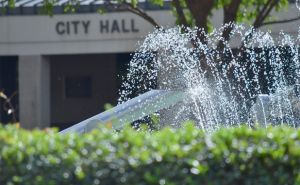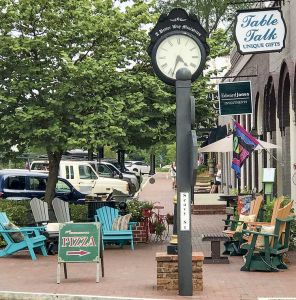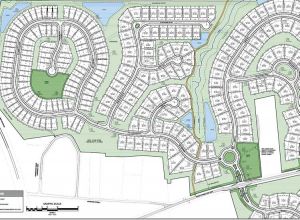The Senoia City Council on July 18 took up the issue of potentially eliminating several city streets from the Historic Neighborhood Overlay area that Mayor Robert Belisle said in past years had been erroneously included in the designated area but are not of sufficient age to be considered historic. The issue was postponed until Aug. 1 after a spokesman for the Stonebridge subdivision objected to his area being removed, citing a potential decrease in property values.
City Administrator Richard Ferry in initially explaining the situation said the Historic Preservation Commission (HPC) was asked by the Mayor and City Council to reconsider the overall size and shape of the current Historic Neighborhood Overlay area. HPC subsequently recommended removing three areas from the district and adding one small neighborhood.
What is now the Stonebridge subdivision and portions of Willow Dell and Freeman Estates on Standing Rock Road are on the fringe of the overlay district and were constructed since 1996, said Ferry.
Ferry said HPC also recommended removing vacant tracts on the east side of the CSX railroad while adding lots with frontage on Luther Bailey Road and Quick Drive.
The July 18 public hearing on the proposed removal of the various properties was met with approval by some affected residents, disapproval by another and general questions by others.
Opposing the removal was Stonebridge subdivision Homeowners’ Association Vice President Richard Bush. The Stonebridge resident said information supplied by an appraiser who serves as the HOA president indicated that property values would diminish if the area was no longer designated as historic. Bush when asked for the data reflecting his position said he did not have it available for the meeting.
Mayor Belisle responded, noting that the inclusion of Stonebridge and the other properties under discussion in the Historic Neighborhood Overlay area had been an oversight from some years ago that needed to be corrected.
“The purpose of historic preservation is to protect historic structures,” Belisle said, adding that the city had been negligent in its duty to include the areas since the oldest of the homes was built in the 1980s and were clearly not historic.
Bush in his comments disagreed, sticking with his assertion of falling property values and saying that the city was simply attempting to chip away at the boundaries of the Historic Neighborhood Overlay. Bush also wanted a 60-day delay before any decision would be made.
Belisle and others on the council held to their position that none of the homes qualified as historic, that they would be subject to stricter permitting criteria if the historic designation was maintained and if improvements were ever proposed and that homeowners would potentially be subject to having to remove existing improvements such as chain-link fences that are not allowed in the overlay area.
Affected residents Ken Hazelton and Barry Flippo sided with removing the subject homes from the overlay area, noting that the homes are not old enough to qualify as historic and adding that they did not want to be subject to the additional criteria required under the historic overlay.
The council, agreeing somewhat to the request by Bush and providing time to have any additional information provided, agreed to delay the discussion until Aug. 1.
Addressing the distinction between the city’s “Historic Neighborhood Overlay” and the “Historic District,” Ferry in a July 18 letter said there has always been confusion regarding the “Historic District” and the “Historic Neighborhood Overlay”. The “Historic District” was created by U.S. Department of the Interior to recognize the efforts of city residents to maintain and preserve the beauty of the built environment in Senoia.
This area is generally bound by Couch Street to the north, the CSX railroad to the east, Ga. Highway 16 to the south and Pylant Street to the west, Ferry continued. The Department of the Interior designation comes with the requirement that the city devise a mechanism to insure compatible construction and rehabilitation within the district. To meet this requirement, the City Council approved the Historic Neighborhood Overlay as part of the Zoning Ordinance.
In the planning of the 1999 comprehensive plan, the city expanded the overlay district to include areas outside of the designated historic district. Initially the Planning Commission provided the required oversight for the Historic Neighborhood Overlay. In 2006, the Historic Preservation Commission was created and still exists today, Ferry said.












Leave a Comment
You must be logged in to post a comment.